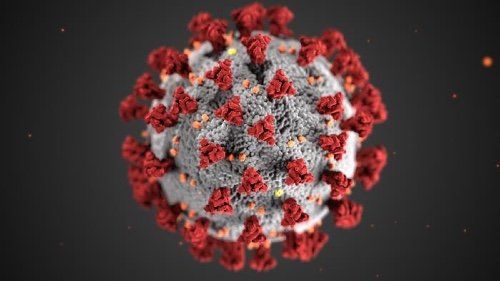Safe Ultrasound Scanning and Cleaning: 5 Steps to Follow
World Federation for Ultrasound in Medicine and Biology Safety Committee offers recommendations to protect patients and providers.

During the COVID-19 pandemic, two of the most important priorities are protecting patients and providing clinically beneficial imaging services. That means you must be able to provide safe scans and keep your equipment clean.
In an effort to facilitate those priorities, the World Federation for Ultrasound in Medicine and Biology Safety Committee, with contributions from an infectious disease expert and an obstetrician/gynecologist, published guidance earlier this month, in Ultrasound in Medicine and Biology, on how to perform safe scans, as well as how to clean and disinfect the machines to reduce transmission of the virus. These recommendations can be used in concert with a facility’s standing protocols and procedure.
To safely provide lung ultrasounds to COVID-19-positive patients, the experts offered these recommendations.
1. Practice Social Distancing: Be sure you’re taking as many steps as possible to keep patients separated. Space seats in your waiting room at least 6 feet apart. Schedule appointments at variable intervals. Some previously published guidance has recommended spacing patients out every 30 minutes instead of every 15 minutes. And, be sure you keep tabs on how much time you’re spending with every patient.
2. Get Rooms Ready: Before you see your first patient, make sure the ultrasound room has been thoroughly cleaned. Wipe down all surfaces and equipment with a low-level disinfectant. Remove unnecessary accessories, the experts recommended, and switch out fabric chairs for ones that can easily be wiped down with a disinfectant.
Additionally, wipe down beds or couches after each patient visit, and be sure to wear gloves when disposing of papers covers. Most importantly, if you can, try to schedule patients who are suspected of COVID-19 infection at the end of the day. Doing so maximizes the time you have for more intense cleaning and disinfecting.
Related Content: Guidance for Ultrasound Protection During COVID-19
3. Sanitize Equipment: Cleaning goes beyond the couches and beds. Your ultrasound transducers and cables must be cleaned and disinfected between every patient. Use a low- to intermediate-disinfectant to clean the transducers used for lung ultrasound, and be sure your staff wears gloves and performs the proper hand hygiene when cleaning and disinfecting the equipment.
If possible, the experts said, single out one ultrasound machine to only be used with patients with suspected or confirmed COVID-19 cases. Limit the number of transducers you keep out, keeping some safely reserved in cabinets.
4. Use Single-Use Gel Packets: When imaging a patient with a suspected or confirmed COVID-19 case, the experts said, use single-use, nonsterile gel packets for external ultrasound exams. If those packets aren’t available, gel bottles can be used for external exams only. Do not refill or heat the bottles, they advised.
When examining a patient, keep one hand clean for patient interactions, and use the other hand – the “semi-clean one” – to dispense gel and take care of other tasks, such as typing and adding information to the electronic health record.
Related Content: COVID-19 and Lung Ultrasound: Experts Suggest New International Standards
5. Wear Personal Protective Equipment (PPE): Lastly – and importantly – wear PPE to protect both yourself and your patients. Put on a surgical face mask before entering the room or any care area, and use a respirator mask, such as an N95, for procedures that generate aerosol, the experts recommended. Anyone touching the ultrasound equipment should wear gloves and practice good hand hygiene both before and after patient visits. Hand hygiene procedures should also be followed for removing PPE or if any infected surfaces have been touched.
If, as a clinician, you are at an increased health risk due to the outbreak, don’t perform ultrasound exams, the experts advised.
New AI-Enabled Portable Ultrasound May Facilitate 50 Percent Reduction in Cardiac Imaging Scan Time
March 28th 2025Artificial intelligence (AI)-powered measurement capabilities provide key features with the Compact Ultrasound 5500CV device, which was unveiled at the American College of Cardiology (ACC) conference.
The Reading Room: Racial and Ethnic Minorities, Cancer Screenings, and COVID-19
November 3rd 2020In this podcast episode, Dr. Shalom Kalnicki, from Montefiore and Albert Einstein College of Medicine, discusses the disparities minority patients face with cancer screenings and what can be done to increase access during the pandemic.
Can Ultrasound-Based Radiomics Enhance Differentiation of HER2 Breast Cancer?
March 11th 2025Multicenter research revealed that a combined model of clinical factors and ultrasound-based radiomics exhibited greater than a 23 percent higher per patient-level accuracy rate for identifying HER2 breast cancer than a clinical model.